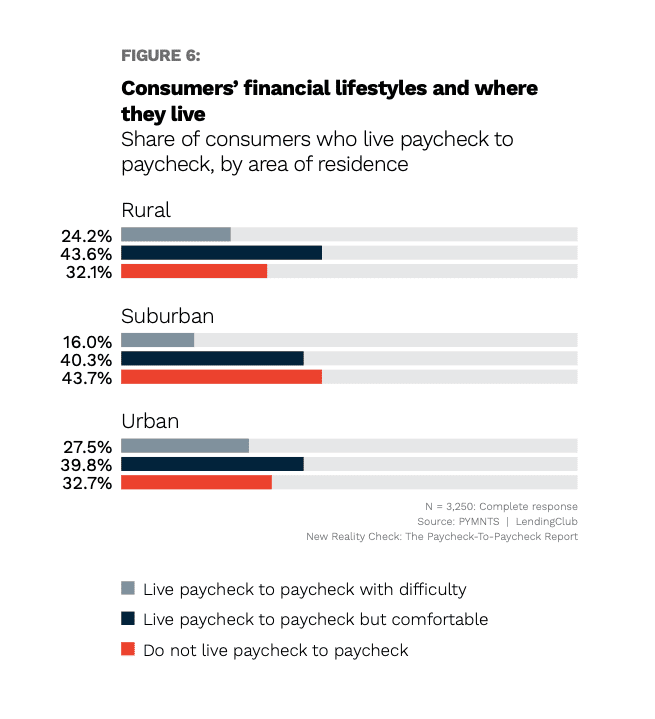Sixty-two percent of U.S. consumers lived paycheck to paycheck in February, according to “The New Reality Check,” a PYMNTS and LendingClub collaboration based on a survey of 3,250 U.S. consumers.
Get the report: The New Reality Check

Urban and rural consumers are equally likely to be living paycheck to paycheck, with 67% of urban consumers and 68% of rural consumers reporting that they do so. Suburban consumers are less likely to live paycheck to paycheck, with only 56% reporting that they do so.

Geographic location has a substantial impact on income. Rural consumers with high incomes are much less likely to be living paycheck to paycheck, while urban consumers with high incomes are just as likely as those with low incomes to be living paycheck to paycheck.
Among the consumers living in rural areas and living paycheck to paycheck, 49% earn less than $50,000 a year, 31% earn between $50,000 and $100,000 a year and just 20% earn more than $100,000 a year.
In urban areas, the results are more evenly distributed between the different annual income groups. Among the consumers living in urban areas and living paycheck to paycheck, 37% earn less than $50,000 a year, 29% earn between $50,000 and $100,000 a year and 35% earn more than $100,000 a year.
Advertisement: Scroll to Continue
In suburban areas, the distribution is somewhere in between. Among the consumers living in suburban area and living paycheck to paycheck, 39% earn less than $50,000 a year, 33% earn between $50,000 and $100,000 a year and 28% earn more than $100,000 a year.

Consumers in urban areas are more likely to live paycheck to paycheck while earning more than $100,000 a year.







